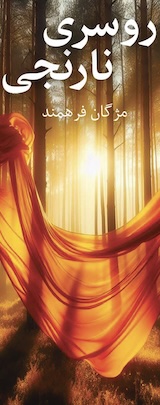Cartoon by Kianoush Ramazani
Young Iranians turn ire on clerics
Najmeh Bozorgmehr
Financial Times: Young men and women run toward clerics in the streets — including old men — knocking off their turbans and running away, giggling as if it is a game.
For more than four decades, Iran’s ruling Shia clerics have taken an uncompromising approach to social freedoms, setting a compulsory Islamic dress code for women, and restricting dancing and drinking alcohol in public.
But public opinion has turned against the conservative establishment in the wake of nationwide protests following the death of 22-year-old Mahsa Amini in September while she was in police custody. Amini was detained for failing to properly observe the Islamic dress code.
Videos of anti-regime protesters knocking turbans off clerics’ heads in cities and towns across the country have surfaced on social media. While not widespread, the attacks have deterred some clerics from wearing the headgear in public.
“This aggressive act is not extensive but has symbolic importance by creating fears among the clergy who wonder how far protesters are ready to go,” said a reform-minded analyst. “The pressure on religious segments of the society is very heavy now. There are concerns that this might happen to women who wear chador, too,” the person said, referring to the top-to-toe black Islamic covering.
While Iran has witnessed protests before, these are the first to call for the toppling of the Islamic establishment. “Canons, tanks, firecrackers; The clergy must get lost,” has been one of the protest’s most popular slogans — the first part borrowed from a football chant critical of referees.
Hundreds of thousands of male and female clerical students live in Iran, which has the biggest seminaries for Shia clergy in the Islamic world. The clerics targeted by young people do not necessarily have any links to the political establishment, nor are they well off, but for protesters, they are fair game.
“When people have no access to clerical rulers, they avenge those clerics who live a normal life without any positions in the political establishment and have no bodyguards,” said Mohammad Ali Abtahi, a cleric and former reformist vice-president.
“This act of knocking turbans off clerics’ heads is a big insult in the clerical world,” he added.
Clerics have been targeted in this way previously, but usually by other clerics or their followers. Abtahi recalls radical hardline clerics knocking his turban off when he visited the holy city of Qom in 2014.
The clergy became the centre of Iran’s political establishment after the 1979 revolution when Ayatollah Ruhollah Khomeini founded the Islamic republic based on his theory of Velayat-e Faqih, or the rule of the highest-ranking cleric, as he brought Islam and politics under one umbrella. His senior religious ranking and political charisma meant that he saw few challenges from other clerics.
However, since 1989 when Ayatollah Ali Khamenei replaced him, clerics have interfered increasingly in the country’s affairs. Even if politicians in Tehran wanted to address demands for more social freedom, they faced opposition from clerics.
The clergy, who people accuse of having lost touch with an increasingly modern society, are reluctant to allow full participation of women in public life. Women’s attendance at football matches has been only recently slightly relaxed, but they are still forbidden to ride motorcycles and there are hardly any female ministers in governments. Rules on divorce, custody and inheritance reflect Islamic decrees. When Abtahi went to Qom in 2001 to lobby religious leaders for the appointment of female ministers, he said the then Grand Ayatollah Lotfollah Safi Golpaygani told him that he would call on his followers to stop paying taxes if a woman was picked as a minister.
Whether this year’s protests will encourage the clergy to make concessions is not clear. So far, many have remained silent about the unrest, barely commenting on the fact that many women now refuse to cover their hair in public, the biggest social change since the revolution.
“What is happening in cities shows the danger to the clergy that the path they have taken [under the Islamic republic] has been the wrong one,” said Abbas Abdi, a reformist analyst, in local media. He added that the clergy had historically been independent of political power but their closer ties to the regime could cost them their position as a leading voice on morality >>>










Comments